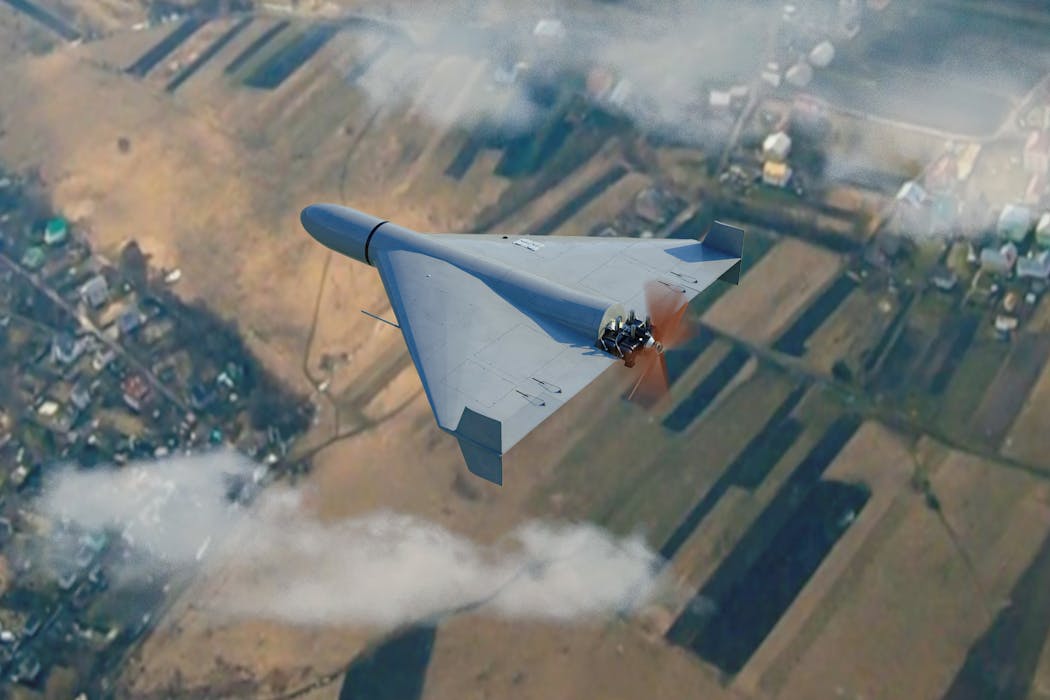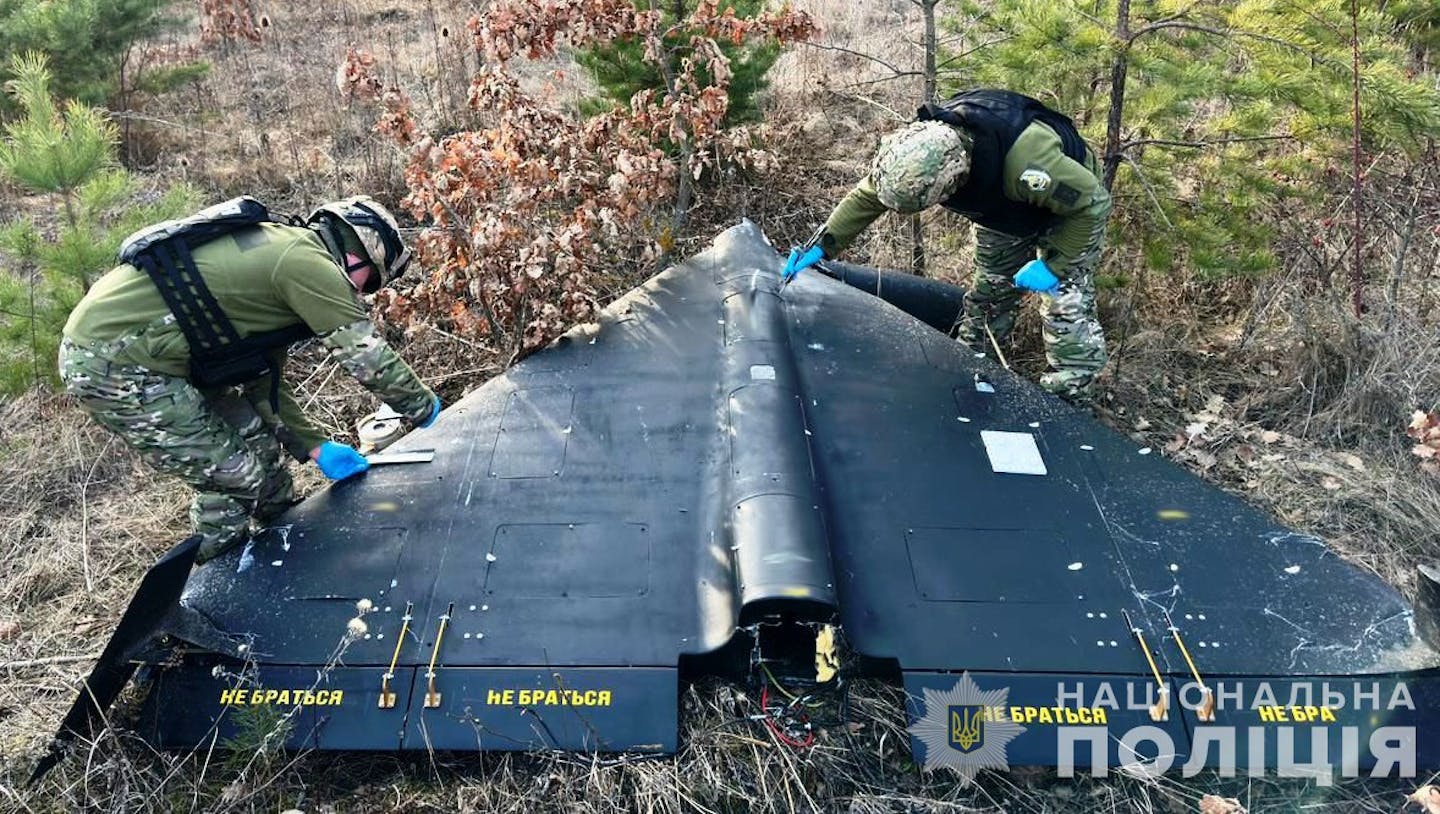
As Moscow’s military offensive grinds on at Europe’s eastern edge, tensions are skyrocketing on the continent due to repeated, brazen violations of European airspace deliberately orchestrated by Russia. Europe has announced counter-measures, in the form of a “drone wall” to combat this new threat.
Between September 9 and 10, 19 drones were spotted entering Polish airspace. A Nato-led air defence response was immediately activated, with Polish F-16s and Dutch F-35s scrambled on a quick reaction alert mission. Three of the drones were shot down, while at least eight others crashed within Polish territory. Another drone penetrated as far as 260km into Poland – deeper than the capital, Warsaw – forcing the temporary closure of four airports.
An even more severe incident occurred on September 13, when three Russian MiG-31 fighters violated Estonia’s airspace for over 10 minutes. The aircraft flew parallel to the border, penetrating less than 10km into Estonian territory before being escorted back by Nato fighter jets.
Poland and Estonia invoked Article 4 of the Washington Treaty, a collective consultation mechanism triggered when “the territorial integrity, political independence or security of any of the Parties is threatened”. Nato responded by condemning “Russia’s reckless actions” and vowing to bolster the Alliance’s “deterrence and defence posture, including through effective air defence”.
There have been further suspected breaches in Denmark (which had just announced the purchase of “long-range precision weapons”), Finland, France, Germany, Latvia, Norway, and Romania. On October 3, drone sightings caused Munich airport closed for a few hours, and nearly 20 flights were cancelled.
What is Russia up to?
Through these intrusions, Russia wants to test the readiness of Nato’s mechanisms of collective defence. Putin wants to know how far Europe is willing to go in defending Ukraine in the face of the US’ ambivalent foreign policy. In other words: is Nato’s Article 5 still a credible deterrent against the Kremlin’s imperialist plans?
Russia’s strategy has clearly taken such a direction in the aftermath of the unsuccessful Alaska Summit between Trump and Putin on August 15 2025. The meeting yielded no concrete measures and, to make matters worse, Trump openly acknowledged the impossibility of reaching a ceasefire between Russia and Ukraine.
Putin’s brinkmanship – the practice of pushing a negotiation to the edge of open conflict in order to achieve a desired outcome – has to be interpreted as a hostile signal. The Kremlin is saying they do not want to stop fighting (yet), as they perceive an advantage in prolonging the war. What’s more, they are putting their foot on the accelerator.
Leer más: What NATO could learn from Ukraine as it navigates Russian threats to European security
Dummy drones and the ‘grey zone’
The aim of this calculated escalation is confirmed by the Kremlin’s weapon of choice. Most of the downed or recovered devices have turned out to be Russian-made Geran-2 (Geranium-2) kamikaze drones, a simplified and cheaper version of the Iranian Shahed-136 widely used in Ukraine.
These drones are mainly employed as decoys to saturate and distract air defences, though they can also perform reconnaissance and opportunistic attacks with small explosive payloads.

Russia’s reckless actions also have a second goal in mind: gauging the overall cohesion of Western public opinions, and of Europeans in particular. The informational and psychological dimensions of warfare are at the heart in this kind of operation, and they have deep roots in Russia’s strategic thinking – especially in its most recent iterations.
This includes spreading misinformation through social media or empowering anti-EU, pro-Russian political parties, but it has now gone further – Russia is now deliberately operating in the “grey zone”. This is the space between war and peace where coercive, non-military actions are intended to achieve strategic goals below the threshold of conventional armed conflicts.
However, its recent provocations may risk escalating to an open war that, at least officially, nobody wants, and which would be devastating for all sides.
Leer más: The eye in the sky: what Denmark’s drone sightings tell us about power and fear down the years
A united front?
Russia is testing Europe’s collective resolve by playing a dangerous divide-and-conquer game with the continent’s different threat perceptions. It may be working. German Chancellor Friedrich Merz has said that “Europe is no longer at peace with Russia”, and Danish Prime Minister Mette Fredriksen has argued that “Europe is in its most dangerous situation since second world war”, but other European policymakers seem unwilling to adopt such an assertive stance.
Furthermore, the widespread pro-Palestinian protests that erupted in the wake of Israel’s interception of the Gaza aid flotilla have underscored the persistent differences in threat perception within European societies. These divisions are not only shaped by geographical or other physical factors, but also ideological alignments – pro-Palestine positions are largely associated ith left-wing sentiments, while pro-Ukraine attitudes are linked to centrist or right-wing views. Europe’s weakness – reinforced by the inconsistencies of US foreign policy – accounts for much of Russia’s strength.
Despite these differences, the recent meeting of the European Political Community (EPC) in Copenhagen saw European leaders projecting an image of unity, cohesion and resilience as they approved a new flagship initiative emblematically called the “drone wall”.
This would not be a physical barrier but a layered network of detection and interception systems. It would build on the existing anti-drone capabilities of individual European countries.
As of today, little is known about what this “wall” will actually look like, how long it will take to be executed (Germany’s Defence Minister, Boris Pistorius, said it could be a matter of three or four years), and who will be in charge of its implementation –the European Commission or the member states?
Warfare is evolving
What is utterly clear is that EU and Nato countries have to adapt their air defence systems to a changing strategic landscape. The threat posed by Russia no longer comes solely from fast-moving-devices – aircraft, ballistic, cruise, or even hypersonic missiles – but also from the rapidly evolving technology of unmanned drones. This new threat must be countered by incorporating cheaper electronic warfare methods, including jamming, spoofing or disrupting the electronic signals that drones rely on.
Leer más: How can Europe fight back against incursions by drone aircraft?
The war in Ukraine has already shown that drones are a gamechanger in 21st century military strategy. They are cheap, small (which means hard to detect with existing technology), able to inflict significant damage, and overall capable of posing a disproportionate threat. Drones are making international security more dangerous and unstable as they shift the military balance away from defence and towards offence.
For this reason, streamlining defence systems against drones is a strategic necessity for Europe. The response of EU and Nato member States has to be decisive, quick and effective, since at this point a much more aggressive action from Russia – a terrestrial invasion of the Baltic States – can no longer be ruled out.
This article is republished from The Conversation, a nonprofit, independent news organization bringing you facts and trustworthy analysis to help you make sense of our complex world. It was written by: Michele Testoni, IE University
Read more:
- European countries are now turning to landmines to create new deadly defensive barriers from Russia
- How can Europe fight back against incursions by drone aircraft?
- The eye in the sky: what Denmark’s drone sightings tell us about power and fear down the years
Michele Testoni no recibe salario, ni ejerce labores de consultoría, ni posee acciones, ni recibe financiación de ninguna compañía u organización que pueda obtener beneficio de este artículo, y ha declarado carecer de vínculos relevantes más allá del cargo académico citado.


 The Conversation
The Conversation
 New York Post
New York Post America News
America News ABC News
ABC News CBS News
CBS News Reuters US Domestic
Reuters US Domestic Associated Press Top News
Associated Press Top News Associated Press US News
Associated Press US News Raw Story
Raw Story @MSNBC Video
@MSNBC Video